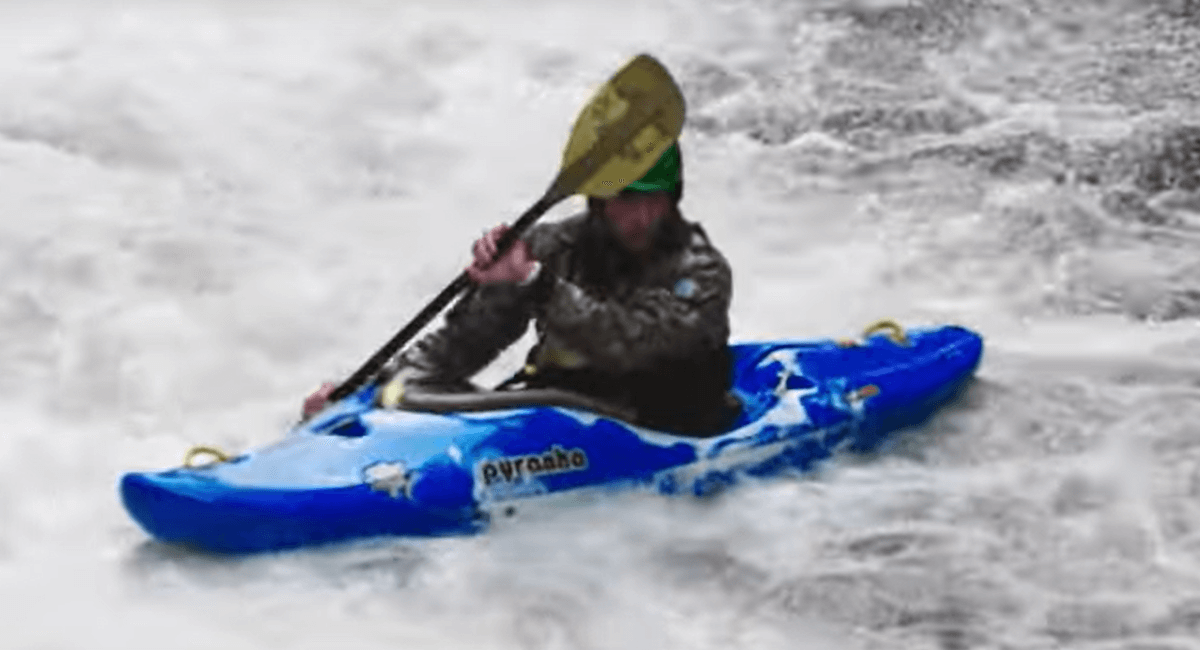Kayaking can pose risks such as drowning, hypothermia, and injuries from collisions. It is crucial to be aware of these dangers to ensure a safe kayaking experience.
Despite its numerous benefits, kayaking comes with inherent risks that can potentially lead to accidents. Understanding and mitigating these dangers is essential for anyone venturing out onto the water. By being prepared and following safety guidelines, kayakers can reduce the likelihood of accidents and enjoy this exciting outdoor activity to the fullest.
Whether you are a beginner or an experienced paddler, staying informed about the potential dangers of kayaking is essential for a safe and enjoyable adventure on the water.
Physical Dangers
Kayaking is a thrilling water sport that offers the opportunity to connect with nature and experience breathtaking scenery from a unique perspective. However, it’s important to be aware of the physical dangers associated with this activity to ensure a safe and enjoyable experience on the water.
Capsizing
Capsizing, or the act of overturning the kayak, can pose a significant threat to kayakers, especially in rough waters or unpredictable weather conditions. It can lead to sudden immersion in cold water and increase the risk of hypothermia.
Hypothermia
Hypothermia is a serious concern for kayakers, particularly in colder climates or during chilly seasons. Prolonged exposure to cold water can cause the body’s temperature to drop rapidly, leading to hypothermia, which can be life-threatening if not addressed promptly.
Injuries From Rocks Or Obstacles
Inexperienced kayakers may face the risk of colliding with rocks, submerged obstacles, or other watercraft, which can result in various injuries, including cuts, bruises, or more severe trauma. Maintaining awareness of the surroundings and choosing appropriate water routes is crucial in mitigating these risks.
Environmental Dangers

When kayaking, it’s essential to be aware of the environmental dangers that can pose a risk to your safety on the water.
Strong Currents
Strong currents can swiftly carry kayakers away, making it challenging to maintain control of the kayak.
Unexpected Weather Changes
Unexpected weather changes can occur suddenly, putting kayakers at risk of exposure to harsh conditions.
Wildlife Dangers

Encounters With Marine Life
Kayaking in the open waters can lead to unexpected encounters with marine life, such as sharks, jellyfish, and sea lions.
- Sharks can mistake a kayak for prey, posing a threat to paddlers.
- Jellyfish stings can be painful and cause allergic reactions.
- Sea lions might approach kayaks out of curiosity but can be territorial.
Insect Bites
When kayaking near water bodies, paddlers may face the danger of insect bites from mosquitoes, flies, and other pests.
- These bites can cause itching, and swelling, and in some cases, transmit diseases.
- Using insect repellents and wearing protective clothing can help prevent bites.
Equipment-related Dangers

Kayaking is an exhilarating outdoor activity, but it’s essential to be aware of the potential dangers that come with it. One of the most critical aspects of kayaking safety is ensuring that your equipment is in good condition and that you have the necessary safety gear. Equipment-related dangers can pose significant risks to kayakers, so it’s crucial to understand and address these potential hazards.
Malfunctioning Gear
Malfunctioning gear can lead to a variety of hazards for kayakers. If kayak equipment such as paddles, rudders, or foot braces fails to function properly, it can result in loss of control and stability on the water. This can significantly increase the risk of capsizing or getting stuck in adverse conditions. Regular equipment inspections and maintenance are vital to ensure that everything is in proper working order before heading out onto the water. Additionally, it’s important to invest in high-quality, durable gear from reputable manufacturers to minimize the chances of equipment failure during kayaking trips.
Lack Of Proper Safety Equipment
One of the most significant dangers of kayaking is the lack of proper safety equipment. Life jackets are a critical piece of safety gear that can potentially save lives in the event of an accident or unexpected emergency. Failing to wear a properly fitting and Coast Guard-approved life jacket can significantly increase the risk of drowning, particularly in challenging water conditions. In addition to life jackets, other essential safety equipment includes helmets, whistles, and throw ropes. It’s crucial for kayakers to prioritize safety and ensure that they have all the necessary equipment before embarking on any paddling adventure.
Human Factors
Kayaking poses several risks, such as capsizing and being trapped underwater, leading to drowning. Factors like strong currents, sudden weather changes, and lack of proper equipment increase the dangers. Kayakers must be aware of these hazards and take necessary safety precautions to prevent accidents.
Inexperience
One of the primary dangers associated with kayaking is inexperience. Lack of experience on the water can lead to a variety of potentially dangerous situations. Novice kayakers may not be aware of proper paddling techniques or how to navigate certain water conditions. Inexperienced kayakers may also be unfamiliar with safety protocols, such as how to properly enter and exit the kayak or how to handle emergencies. Beginners need to undergo proper training and gain experience under the guidance of a knowledgeable instructor.
Ignoring Warning Signs
Another significant human factor that can lead to dangerous situations while kayaking is ignoring warning signs. Water bodies, especially rivers and lakes, often have warning signs indicating hazardous conditions or restricted areas. These signs may indicate strong currents, submerged obstacles, or areas with dangerous wildlife. Ignoring these warning signs can put kayakers at risk of capsizing, injuries, or even drowning. It is crucial to respect these signs and adhere to any restrictions placed by authorities.
Table: Common Warning Signs While Kayaking
| Warning Sign | Meaning |
|---|---|
|
|
|
|
|
|
|
|
By ignoring these signs, kayakers not only put themselves at risk but also potentially endanger the lives of rescuers who may need to intervene in case of an emergency.
Overall, human factors such as inexperience and ignoring warning signs significantly contribute to the dangers of kayaking. Kayakers need to prioritize safety, undergo proper training, and always remain vigilant while enjoying this thrilling water sport.
Preventive Measures
When engaging in any outdoor activity such as kayaking, it is essential to prioritize safety. The risks and dangers associated with kayaking can be mitigated significantly by following proper preventive measures. These measures include safety training and checking weather conditions before heading out on the water. By adhering to these guidelines, kayakers can minimize the potential dangers and ensure a safe and enjoyable experience.
Safety Training
Safety training is crucial for anyone who wishes to go kayaking. This involves learning basic paddling techniques, understanding water currents and potential hazards, and familiarizing oneself with safety equipment. By taking part in safety training programs or seeking guidance from experienced kayakers, individuals can enhance their skills and knowledge, making them better equipped to handle challenging situations that may arise.
Checking Weather Conditions Before Kayaking
One of the most important preventive measures to consider before kayaking is checking the weather conditions. Weather can change rapidly, and unfavorable conditions can pose serious risks for kayakers. It is essential to always check the weather forecast for the day and planned kayaking location. Strong winds, thunderstorms, or heavy rainfall can make the waters unpredictable and dangerous. Postponing or rescheduling the kayaking trip in case of adverse weather conditions is a wise decision to ensure personal safety.
Frequently Asked Questions For What Are The Dangers Of Kayaking
What Are The Dangers Of Kayaking In Open Water?
Kayaking in open water can be dangerous due to strong currents, unpredictable weather conditions, and the risk of capsizing. It’s important to be aware of potential hazards, wear a life jacket, and have proper safety equipment.
Are There Any Risks Associated With Kayaking Alone?
Kayaking alone can be risky as there is no one there to assist in case of an emergency. It’s recommended to always kayak with a partner or inform someone about your plans, wear a life jacket, and carry a communication device in case help is needed.
Can Kayaking In Rough Waters Lead To Accidents?
Yes, kayaking in rough waters can increase the risk of accidents. Large waves, strong winds, and turbulent conditions can cause the kayak to capsize or throw the paddler off balance. It’s important to have experience and training in handling rough waters before attempting such conditions.
Conclusion
While kayaking can be a thrilling and rewarding activity, it’s essential to be aware of the potential dangers. By understanding and respecting the risks, and taking necessary precautions, kayakers can enjoy their time on the water safely. Remember to always prioritize safety and be mindful of the surroundings to have a fun and secure kayaking experience.
